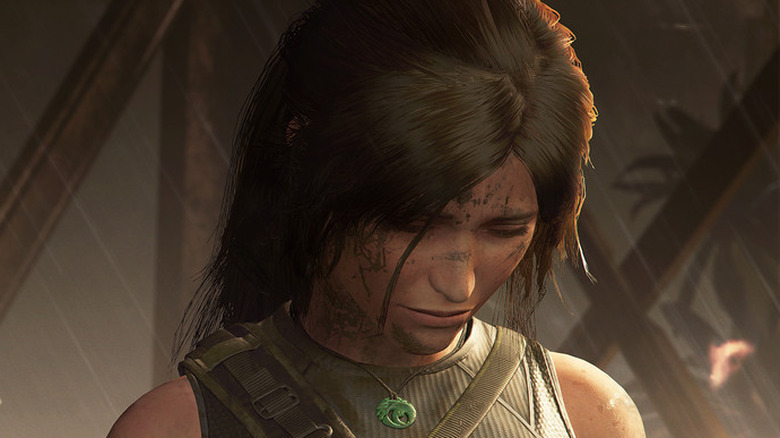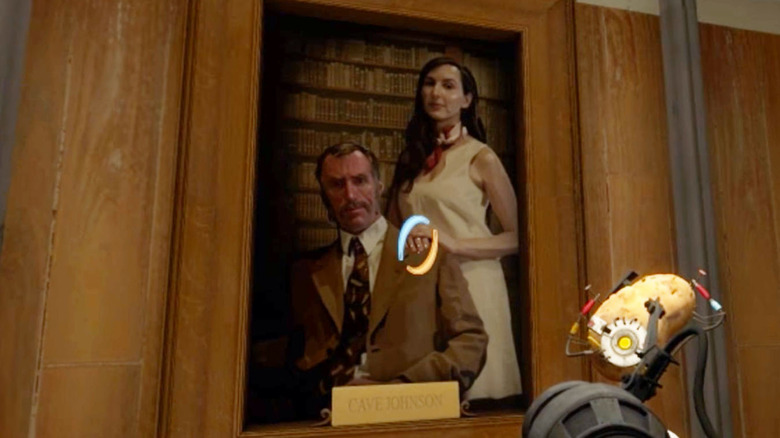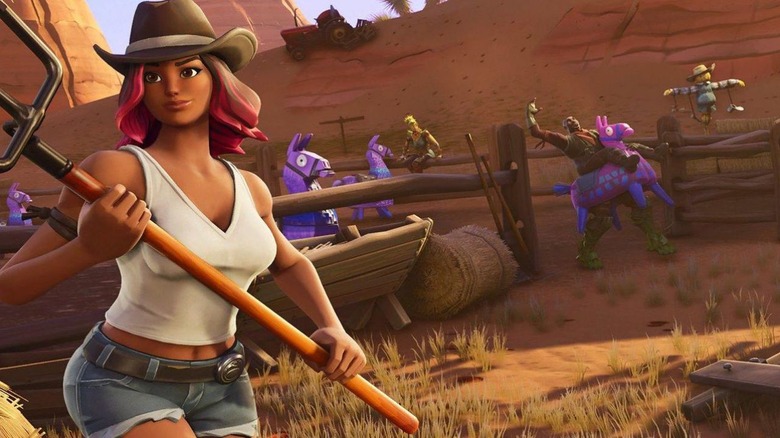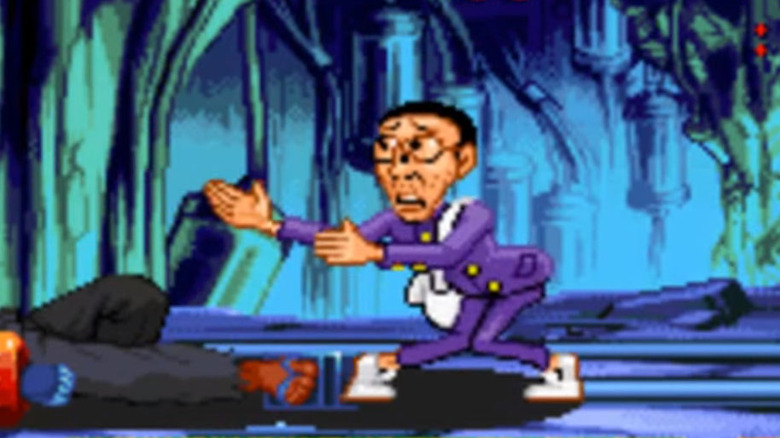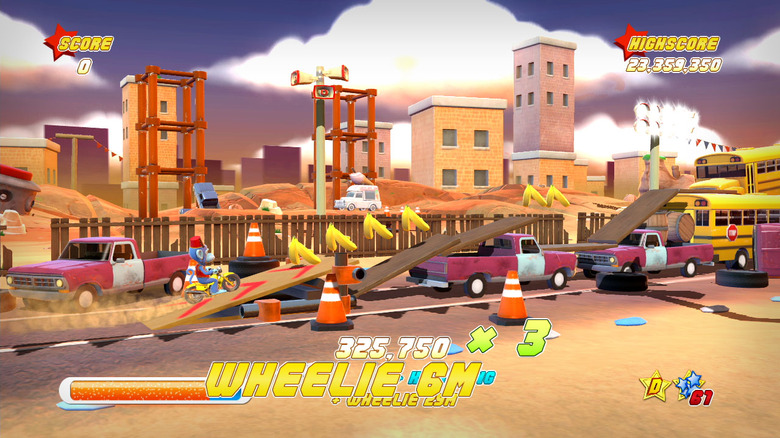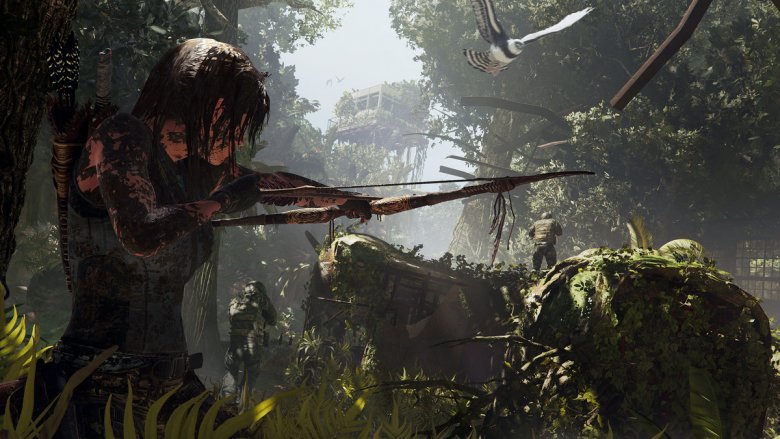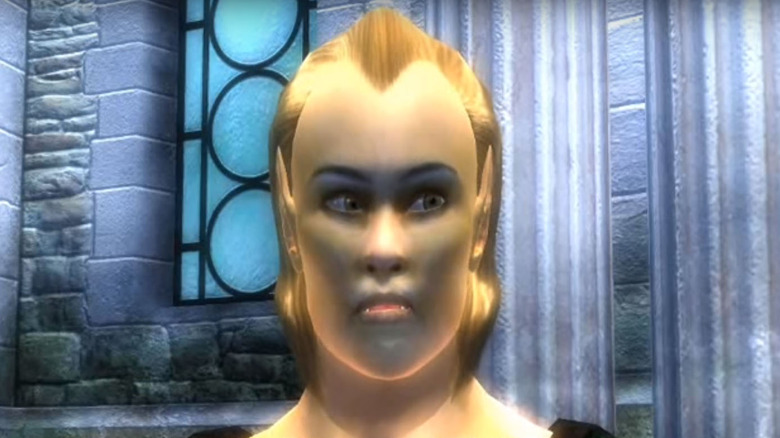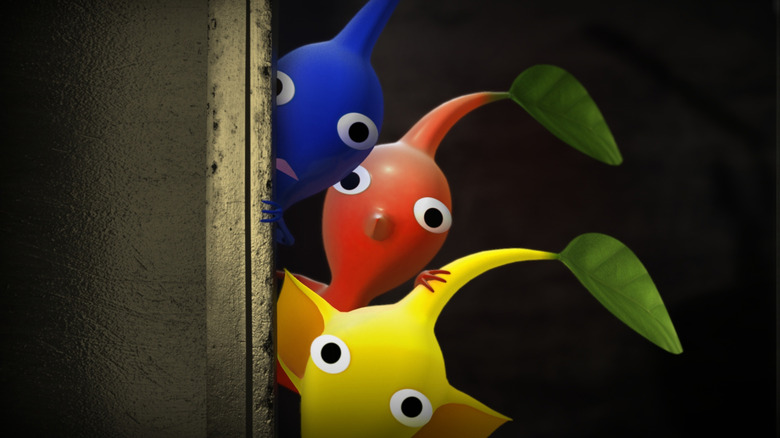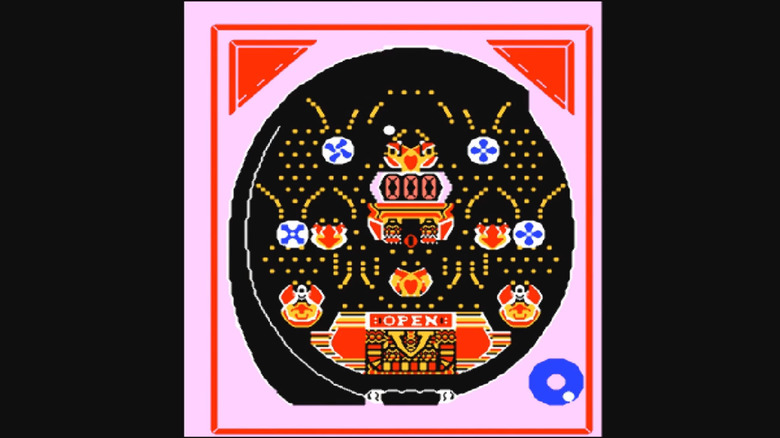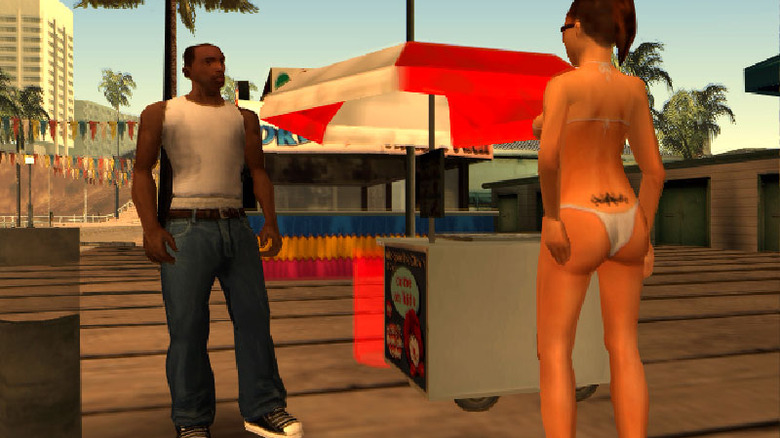Bizarre Things Developers Accidentally Left In Games
When you're making a video game, expect the unexpected. Plans change. Prototypes don't pan out, playtesting reveals some much-needed adjustments, and old work — sometimes years' and years' worth — is rendered obsolete in mere seconds. It's a crazy, turbulent, and unpredictable industry and, amid all of that chaos, the occasional mistakes are made.
Like, say, failing to clean up after oneself. Games in development change all of the time, but sometimes, the developers don't actually delete their old content. Sometimes, they try to hide it instead — or, occasionally, just ignore it and hope that players won't find it. But we're talking about gaming fans, many of whom are just as curious as they are passionate. If there's a secret to uncover, they're going to find it.
Occasionally, what they find is downright strange. Over the years, players have located the following digital artifacts hidden inside their favorite games. It's pretty easy to see how they got there, but we're not sure why many of them exist in the first place. Look, people: video games are weird. If you need proof, well, read on.
The sordid secret of GLaDOS' first victim
Portal might've introduced the malevolent AI GLaDOS to the world, but Portal 2 is the game that made us care. Oh, sure, GLaDOS has always been funny, but Portal 2 gives her a reason to be so mean: she's actually Aperture CEO Cave Johnson's personal assistant Caroline, whose mind has been uploaded into a piece of technology, transforming her into the sociopathic computer that we know and love today.
You can piece this story together by playing through Portal 2 and listening to the audio logs that Cave left around the facility, but the story takes a much, much darker turn if you fire up some of the unused audio files included with Portal 2's data. At some point, Caroline was supposed to repeat, "Sir, I do not want this." Her protests, which most people take to mean that Caroline was forced to become GLaDOS against her will, are adamant and unsettling, and quickly transform Cave Johnson from a comedy villain into a straight-up abuser.
It's uncomfortable to listen to, but it's not quite as bad as you might've heard. While rumors suggest that actor J.K. Simmons found the scene too rape-y and refused to record his half of the lines, Portal 2 writer Erik Wolpaw says that's not true, adding, "Apparently these are people who never saw [prison drama] Oz. J.K. Simmons will do anything if you pay him."
Fortnite's Calamity wins the booby prize
Fortnite: Battle Royale might be distracting kids in schools, but with Season 6, Epic decided to make up for it by giving everyone a surprise anatomy lesson. If you bought Fortnite's Season 6 Battle Pass, you unlocked Calamity, an exclusive skin starring a female cowpoke. At first, Calamity is just wearing shorts, a tank top, and a cowboy hat. As you level up, she'll earn a bunch of new gear, including a form-fitting vest and a stylish purple-trimmed duster.
When Season 6 launched, however, Calamity was stuck in her regular outfit, and that caused some problems. Most of the time, Calamity looked just fine. When she danced, on the other hand, she got awfully bouncy. Somehow, Calamity's skin got its boob physics cranked way, way up, and every time that she decided to bust certain moves — like, say, the "Jubilation" emote — she'd start pushing the boundaries of Fortnite's family-friendly vibe.
It was a mistake, pure and simple, and Epic apologized almost immediately. "This is embarrassing and unintended," an Epic representative told PC Gamer, and the company patched Calamity's jiggles out in about a day. That's great, although it doesn't explain why Calamity's body was so floppy in the first place. Boob physics don't just happen. Someone has to put them in the game — and, in this case, someone had to take them right back out again.
Marvel Super Heroes vs Street Fighter's scandalous special move
Years before Thanos stormed into theaters, Marvel Super Heroes vs Street Fighter was arguably the most ambitious crossover event in history, especially in Japan. Norimaro, a gangly teenage otaku, never tousled with the Avengers, and you won't find him on Shadaloo's hit list. Instead, he sprang fully-formed from the mind of Japanese comedian Noritake Kinashi, who still controls the rights to the character. That's why we've never seen him pop up again.
Norimaro was removed from the game's Western editions. His dialogue was translated, and he's still in the game. He's just not playable.
That's not the bizarre part, however. The weird thing about Norimaro is his unused, completely inappropriate special move. The pervy schoolboy imagines various Capcom heroines — including the 10-year-old Anita (Russian beefcake Zangief pops up there, too) — in a variety of seductive poses and suddenly suffers a torrential nosebleed. Of course, nosebleeds are anime and manga shorthand for sexual arousal — because, you know how when dudes get turned on, blood starts to flow? The nasal geyser even has its own hitbox, so, originally, you could actually damage foes with Norimaro's boner blood. It's pretty clear why the move was removed, especially with Marvel involved, but we wish Capcom had taken it out of the game entirely. No matter how hard it is to find it, some things you just can't unsee.
No Man's Sky's very own space chimp
No Man's Sky's procedurally generated universe may not be infinite, but is might as well be. If you visited every planet in No Man's Sky's digital galaxy, it'd take you about 585 billion years. As such, there's probably tons of weird stuff out there waiting for virtual astronauts to stop by and take a peak — but we're guessing that none of it is as weird as the stuff that Hello Games left in No Man's Sky's code.
As soon as No Man's Sky hit PCs, data miners started sorting through the game's data, and they turned up some pretty interesting stuff. Some of it sheds new light on No Man's Sky's development process, like references to the Xbox 360 and PlayStation 3. Some of it's just funny, like the folder dedicated to No Man's Sky's in-game poop.
Dig deeper, though, and things start to get pretty strange. Why is the Half-Life 2 logo everywhere? What's with that creepy looking astronaut? The fez-wearing monkey is a nod to Hello Games' other flagship franchise, Joe Danger, but what's it doing here?
A non-canon ending lurks in Tomb Raider's shadows
Let's say you beat a relatively new game, and then hop online to discuss its cliffhanger ending. Except, once you hit the forums, everyone tells you that the game doesn't have a cliffhanger ending. Did you imagine it? Are you the victim of an elaborate prank? Do you admit that you might be going a little crazy, or do you hold fast and stand your ground?
If you're Tombstone, a poster over at the Tomb Raider forums, you do the latter — and, eventually, you get the apologies that you deserve. See, Tombstone played pretty much the same version of Shadow of the Tomb Raider as everyone else, but instead of seeing a post-credit sequence with (minor spoilers ahead) a brief nod to classic Tomb Raider, they witnessed something much open-ended: a scene in which Lara receives a letter from Jacklyn Natla, the very first Tomb Raider game's big bad (and a notable absence from the modern Tomb Raider reboot trilogy).
Now, the ending that Tombstone found wasn't supposed to be there. According to people who worked on the game, the original post-credits sequence was included in the game by accident, and the game's big day one patch is supposed to fix it. But Tombstone didn't download the patch, and even though they really did beat the game, their fellow forum readers thought he was trolling. You have our sympathies, Tombie. That sucks.
The oblivious Oblivion outtakes
Look, The Elder Scrolls IV: Oblivion is a big, big game. Try as it might, Bethesda was never going to squash all of its bugs. The game is simply too complex to track down every single thing that could go wrong. There are ways that Bethesda could've made things better, though. For one thing, it could've removed some of the voice acting outtakes from the game before launch.
It didn't, though. In fact, if you want to hear some of Oblivion's cast flubbing their lines, you don't even need to pry the game's code open. Just play. That guy who hates spriggans so much that he decides to deliver the same line twice? You'll find him. Or maybe you'll stumble across the female elf who doesn't like how she told you about break-ins at the Arcane University and asks to try again. The man who informs you that "Lady Umbrox has hired a new Captain of the guard," on the other hand, doesn't seem too upset with his performance, although he does forget his line and have to start over.
It's pretty funny, but also: why? Why did Bethesda include outtakes in the game? You have to assume that the actors' final performances stashed away on a disk somewhere, and it's not like Oblivion ends with a blooper reel.
The elusive Pikmin PC port
Everyone knows that you didn't buy the GameCube for its paltry third-party offerings. You bought it for the Nintendo joints like Metroid Prime, The Legend of Zelda: The Wind Waker, and, of course, Pikmin.
But what if Pikmin hadn't been a GameCube exclusive? What if it had come to other platforms as well? That's not just a rhetorical question, either. In a way, it did. Pikmin's tiny disc comes with a fully functioning Windows executable that, once opened, runs the game in debug mode. Now, this is a pretty trippy version of Pikmin, and not everything works like it's supposed to. There's no sound, Captain Olimar's health always reads as zero, and if you want to see more than one Pikmin on-screen at a time you'll need to toggle a few settings.
Even better, the game runs on modern PCs, so once you do the work to get it up and running, you'll be able to enjoy it on your gaming rig just fine. No emulators needed. Now, this isn't the best way to enjoy Pikmin, but for series junkies, it's kind of fun to get a glimpse into Nintendo's process. The Big N probably should've taken this feature out, but we're glad they didn't.
Pachi Com: ticked off and switched off
If you've ever worked in an office environment, at some point you've probably clashed with a supervisor who simply doesn't see things like you do. If you were a Japanese game developer during the 8-bit era, however, you could do something about it. Throughout the '80s, disgruntled programmers hid rants about their co-workers in the code for games like Erika and Satoru's Dream Adventure, and while they're pretty funny, watch out: some of the language can be awfully salty.
A programmer for Pachi Com, an early pachinko simulator for the Nintendo Famicom, takes things a little further. He clearly wasn't a fan of any of his bosses, but he saves most of his vitriol for the people in charge of the game's soundtrack. Not only does the anonymous developer complain about the sound choices, but he offers instructions on how to turn Pachi Com's most annoying sounds off.
Obviously, this rant isn't supposed to be there. It takes up a whopping 5% of the game's entire file size, and it was removed when Pachi Com was ported to the Famicom Disk System. The soundtrack hack isn't the only Easter egg that the programmer hid in Pachi Com, either. He hilariously advises any "perverts" to buy the MSX edition of Pachi Com too, which, as promised, holds its own secret message: a series of written-out sound effects that translators sum up as "masturbation noises."
Thanks to Hot Coffee, Rockstar Games gets burned
Between the depraved subject matter, the international bans, and the racist overtones, parents, politicians, and other moral authorities had plenty of reasons to hate Grand Theft Auto. They didn't need another. In 2004, Rockstar Games gave them one anyway. It's called Hot Coffee.
Hot Coffee refers to a mini-game in which Grand Theft Auto: San Andreas' hero CJ and his girlfriend have full-on, hardcore sex — kind of, anyway. The mini-game wasn't actually finished, it features two fully-clothed characters, and it's about as erotic as watching two mannequins fall on top of each other. It wasn't supposed to be found, either. While Rockstar co-founder Sam Houser really wanted to put graphic sex into the game, for commercial reasons the mini-game had to go. There was just one problem: thanks to the way that Grand Theft Auto: San Andreas' code works, the mini-game couldn't be deleted. It could only be hidden.
That meant a modder like Patrick Wildenborg could find it. In fact, it took Wildenborg a mere 15 minutes to create Hot Coffee, the mod that unlocked San Andreas' bizarre virtual sex scenes, once the game's PC port came out. Before long, Rockstar was forced to replace existing copies of Grand Theft Auto: San Andreas with a sex-free version, costing the developer millions of dollars. It was, by any definition, a real, bona fide scandal. Frankly, the video game industry hasn't been the same since.

